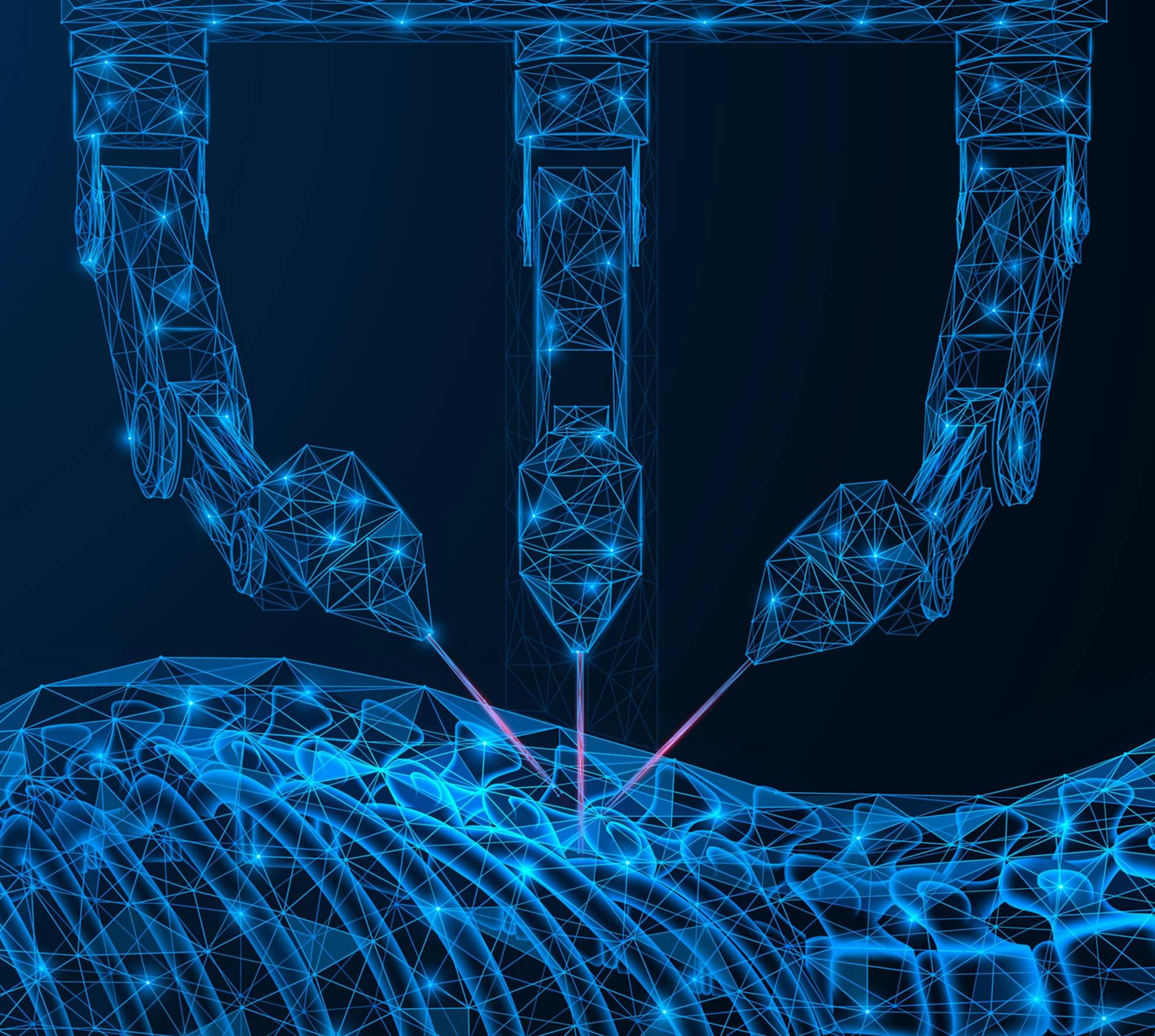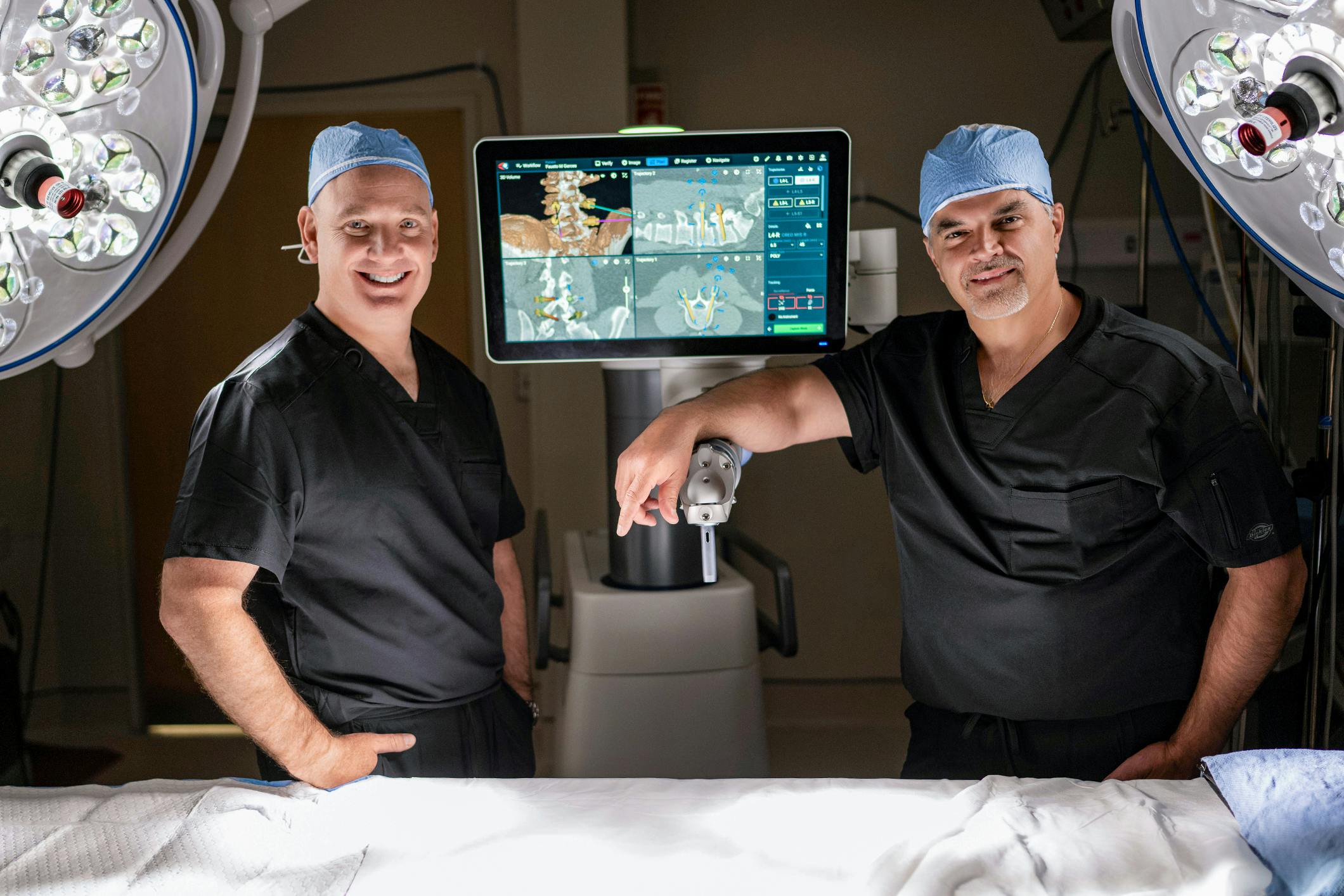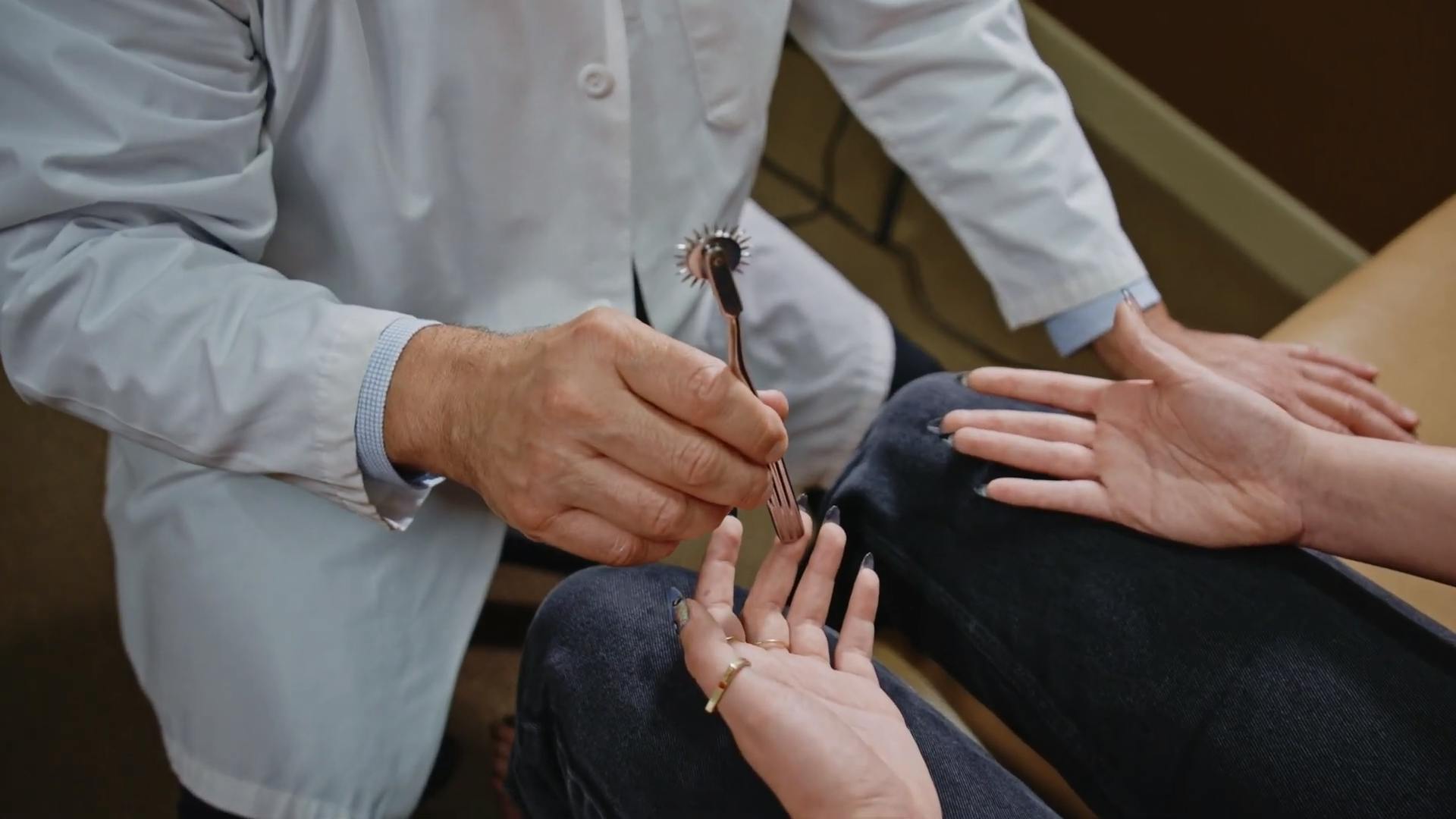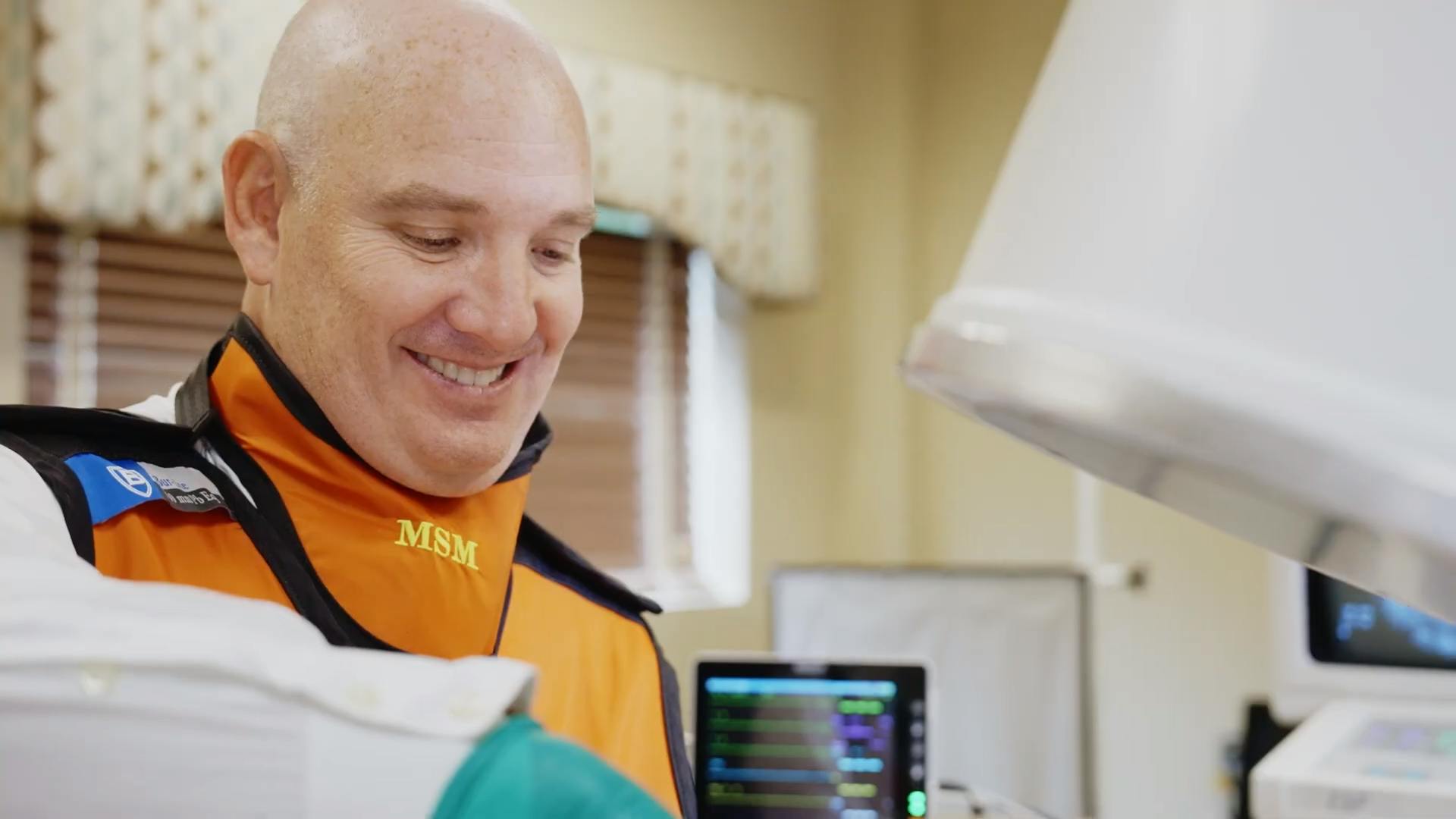Learn More About Robotic Spine Surgery
Prioritizing Your Well-being
At the Center for the Functional Restoration of the Spine, our tailored approach to patient care sets us apart. Our care for you goes beyond just medical treatment; we take the time to create a lasting health relationship. We don’t jump immediately to surgery for every patient – but when it is needed, our orthopedic surgical team employs the most cutting-edge technology to resolve your pain and help you get back to your busy life.
Our Tools The Globus ExcelsiusGPS® Robotic Navigation Platform
Robotic spine surgery reduces complications during surgery and ensures precise placement of hardware. As a result, your procedure is safer, and your recovery is faster. Our team combines their surgical skill with the accuracy of a robotic system, including the Globus ExcelsiusGPS® Robotic Navigation Platform, to perform surgeries that repair spinal conditions and alleviate your pain.

How the Robotic Navigation System Works
Robotic spine surgery, a minimally invasive procedure, uses a robotic arm that’s guided by 3-dimensional (3D) imaging of your spine and a real-time navigation system. The robotic arm helps your provider insert pedicle screws that stabilize the spine and facilitate spinal procedures. The Globus robotic system provides exceptional precision, ensuring a more accurate placement of spinal hardware.
When Robotic Spinal Surgery Can Help
You may benefit from robotic spine surgery if you have a spine condition that requires spinal decompression, spinal fusion, disc removal, or fracture repair. A few of the most common conditions treated with robotic spine surgery include:
- Spinal stenosis
- Herniated discs
- Scoliosis
- Degenerative disc disease
- Kyphosis

How Robotic Spine Surgery Works
Before you have robotic spine surgery, the team at the Center for the Functional Restoration of the Spine takes a CT scan of your spine. They upload the 3D image to the robotic system, where they can view it on a monitor. The Globus system allows the team to rotate the 3D image on the monitor so that they may use multiple angles to precisely plan your surgery.
The robotic arm uses the imaging to determine the exact location and proper angle for your screw placement. After they move the robotic arm into the appropriate position, your provider uses it to guide their surgical instruments. During the surgery, specialized Globus technology continues to provide real-time images of your spine and the procedure. The robotic device also alerts the team if they need to adjust the screw’s location to move it away from nerves or blood vessels.
The Potential Benefits of Minimally Invasive Robotic Spine Surgery
- Small Incisions: The surgeon operates through smaller incisions along the spine than may be possible with traditional spinal surgery.
- Less Tissue Damage: A minimally invasive technique allows the surgeon to separate the muscles surrounding the spine rather than cutting through them.
- Lower Risk of Bleeding: Our patients experience less bleeding than patients who undergo more invasive procedures.
- Shorter Hospital Stay: Less tissue damage and smaller incisions may lead to a shorter hospital stay and a quicker path to recovery.
- Less Pain and Faster Recovery After Surgery: Smaller incisions that avoid cutting into the muscle can mean a shorter, less painful recovery time. Instead of cutting muscle, your surgeon uses a tubular retractor to gently separate the muscle fibers and create a small opening.
- Minimal Scarring: With a less invasive procedure, you can expect less scarring afterward.
The Potential Benefits of Minimally Invasive Robotic Spine Surgery
Small Incisions
The surgeon operates through smaller incisions along the spine than may be possible with traditional spinal surgery.
Less Tissue Damage
A minimally invasive technique allows the surgeon to separate the muscles surrounding the spine rather than cutting through them.
Lower Risk of Bleeding
Our patients experience less bleeding than patients who undergo more invasive procedures.
Shorter Hospital Stay
Less tissue damage and smaller incisions may lead to a shorter hospital stay and a quicker path to recovery.
Less Pain and Faster Recovery After Surgery
Smaller incisions that avoid cutting into the muscle can mean a shorter, less painful recovery time. Instead of cutting muscle, your surgeon uses a tubular retractor to gently separate the muscle fibers and create a small opening.
Minimal Scarring
With a less invasive procedure, you can expect less scarring afterward.

Our Mission Your Total Rehabilitation
The Center for the Functional Restoration of the Spine specializes in the highest caliber of treatment for congenital, chronic, or acute spinal disorders, as well as back problems.
From the back and neck pain of strains and sprains to the most complex spinal problems, such as herniated discs, scoliosis, degenerative discs, and stenosis, our physicians go to the latest medical science to get you relief.

A Personalized, Concierge-Caliber Experience
Visit us in Shrewsbury, Toms River, and Edison to meet our exemplary medical staff. We are pleased to invite you to enjoy the most technologically advanced equipment and receive optimized treatment in our clean and comfortable practice. We’re honored to serve our New Jersey community and look forward to meeting you.





